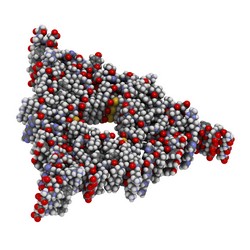The mechanical properties of amyloids
Several forms of age-related dementia such as Alzheimer's and Parkinson's diseases are associated with insoluble protein aggregates known as amyloids. Amyloids exist as long, rope-like structures that can self-associate into intractable plaques, a hallmark of many amyloid-related diseases. The key objective of the EU-funded NANOMECHAMYLOID (Investigation of the relationship between the material properties of insoluble, protein aggregates known as amyloids and common forms of age-related dementia such as Alzheimer's and Parkinson's) project was to determine the material properties of different amyloid fibrils. Towards this goal, scientists developed the ground-breaking technique of four-dimensional cryo-electron microscopy, which combined the spatial resolution of electron microscopy with the temporal resolution of laser spectroscopy. This technique allowed the application of minute forces to materials and the construction of movies of the resulting displacement. Using this approach, researchers successfully elucidated the 3D structure of amyloid fibrils with high resolution over time. Researchers systematically dissected the nanoscale origins of amyloid elasticity by measuring the bond stiffness of the intermolecular forces. Intriguingly, they found that amyloid had a pronounced mechanical anisotropy with longitudinal, hydrogen bonding 20 times stiffer than electrostatic interactions. This suggested a length-dependent mechanical behaviour of amyloid fibrils that aids in understanding their interaction with the cell membrane and the spread of amyloid diseases. Future experiments to identify the distinct biophysical properties of the different types of amyloid fibrils should provide unprecedented insight on how these species cause Alzheimer's disease.







